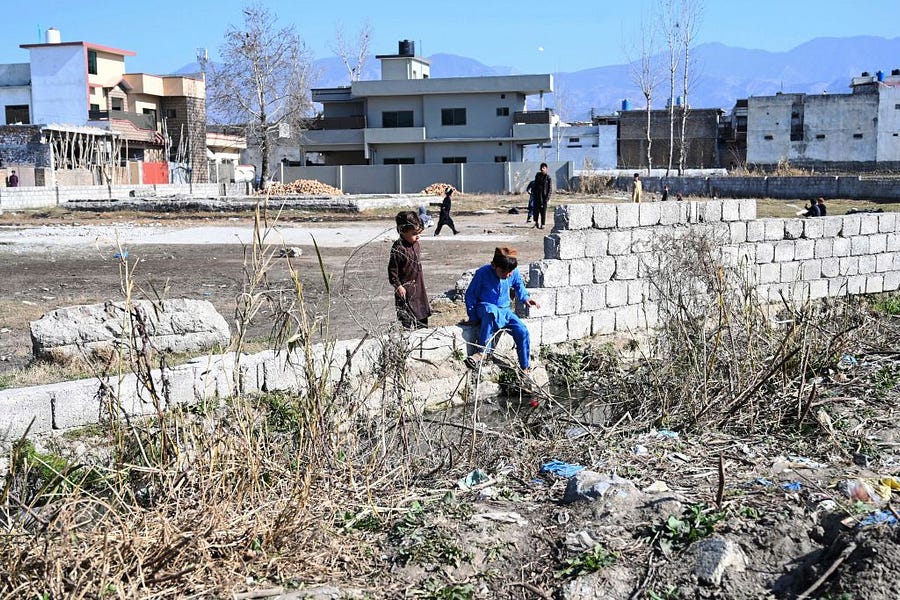May 2 is the 10th anniversary of the raid on Osama bin Laden’s compound in Abbottabad, Pakistan. For America, bin Laden’s death brought about a collective sigh of relief. The master terrorist responsible for the most devastating attack on U.S. soil in decades was dead.
A decade later, however, we can say this with certainty: Al-Qaeda is alive.
That’s not just my assessment. No one today seriously argues that al-Qaeda has been defeated once and for all. That was a popular argument in the immediate aftermath of the bin Laden raid, when Obama administration officials often bragged that al-Qaeda was, if not dead, then at least on death’s door. The Obama team conceded that the terrorist threat had “metastasized.” But Obama and his advisers were eager to claim that al-Qaeda was “a shadow of its former self,” and on the “path to defeat.” John Brennan, Obama’s most senior counterterrorism adviser and then CIA chief, went so far as to predict that the group would be dead within a decade. “Indeed, if the decade before 9/11 was the time of al-Qaida’s rise, and the decade after 9/11 was the time of its decline, then I believe this decade will be the one that sees its demise,” Brennan said during a speech on April 30, 2012.
Nine years later, no U.S. counterterrorism official is predicting al-Qaeda’s demise within the next year. The triumphalist rhetoric of the Obama years is, for the most part, gone.
Instead, the Biden administration has taken a different approach. During his public appearances, such as when announcing the U.S. withdrawal from Afghanistan, President Biden has emphasized how different the world is today. He points to the new challenges we face—from the coronavirus pandemic, to cyber crime, to the threats posed by China and Russia. All of which is true. With respect to al-Qaeda, President Biden is a bit more circumspect than the Obama team, to which he belonged.
During his speech before Congress earlier this week, President Biden claimed only that the threat from al-Qaeda had been “degraded” in Afghanistan, while the jihadists fight on elsewhere. “Al-Qaeda and ISIS are in Yemen, Syria, Somalia, and other places in Africa and the Middle East and beyond,” President Biden said. That’s true. But the president used this observation to justify his withdrawal from Afghanistan, as if the growth of jihadism elsewhere somehow lessens the threat streams pouring out of South Asia. That’s a problematic argument.
Contrary to what President Biden claims, we should be careful not to write off al-Qaeda in Afghanistan and Pakistan. Al-Qaeda is poised to capitalize on the Taliban’s battlefield gains, while its footprint in both countries has been consistently underestimated. For example, the Pakistani Taliban (Tehrik-e Taliban, or TTP) has thousands of fighters under its command. Even though the TTP is clearly part of al-Qaeda’s web, its membership is rarely included in U.S. assessments of al-Qaeda’s size and strength. Once one realizes that the TTP has been reconstituted and is growing, and that this is part of al-Qaeda’s strategy, al-Qaeda doesn’t look so “degraded” in Afghanistan and Pakistan. There are many additional facts I could add to buttress this point. Al-Qaeda’s strategic relationship with Taliban leaders, such as Sirajuddin Haqqani, adds to the group’s depth. Al-Qaeda’s weekly newsletter also advertises the jihadists’ resiliency, documenting their regular participation in battles against the Afghan government and others.
How is it possible that al-Qaeda survived nearly 20 years of intense war?
There are many answers to this question, which is more complex than it may sound.
On the 10th anniversary of bin Laden’s death, and after studying al-Qaeda for the past two decades, let me offer some thoughts.
First, al-Qaeda was never solely a terrorist organization. For obvious reasons, the 9/11 hijackings came to dominate America’s and Europe’s view of the group. But it is striking how little al-Qaeda has actually invested in mass casualty attacks in the West. For instance, the 9/11 Commission found that thousands of recruits, perhaps as many as 20,000, were trained in al-Qaeda’s camps in Afghanistan between mid-1996 and September 11, 2001. Only a small number of these trainees, less than 1 percent, were selected for missions in the West. The vast majority of them were trained to wage guerrilla warfare and take part in insurgencies. Consider that al-Qaeda’s pre-9/11 camps produced far more fighters dedicated to waging jihad on behalf of the Taliban in Afghanistan than terrorizing Americans.
Why? One way to look at it is to think of Osama bin Laden as an evil revolutionary. He wanted to strike America, and he did. But he always saw this is as a step, or a tactic, toward his longer-term goal of sparking a jihadi revolution in Muslim-majority countries. As the files recovered in his Abbottabad compound make clear, bin Laden sought to resurrect an Islamic caliphate. That was his ultimate political goal and remains al-Qaeda’s chief objective to this day, even if sometimes it looks fanciful to American eyes.
For bin Laden, the vast majority of Muslims had lost their way by ignoring the supposed necessity of waging jihad. Bin Laden believed that if he struck America, then he could inspire many to take up his cause. He also thought the U.S. would retreat from the broader Middle East, thereby creating the space for his jihadi revolution across a number of countries. Conversely, after the U.S. didn’t retreat, al-Qaeda sought to bleed the U.S. and its allies in long-term insurgencies, hoping to eventually kick out the Americans.
Events certainly haven’t gone as bin Laden planned. But when you think of al-Qaeda as principally an insurgency group, and not purely as a terrorist organization, then its presence in all of the areas mentioned by President Biden starts to make sense.
Many jihadis refer to bin Laden as the “Reviving Imam,” or the “Reviving Sheikh,” thereby crediting him with reigniting the flame of jihad. In other words, despite suffering many defeats and ultimately succumbing to American might, bin Laden succeeded in sparking his jihadi revolution.
Consider that al-Qaeda has established several regional branches, all of which are devoted to waging insurgencies in their designated geographic regions. Al-Qaeda hopes that they will replace existing governments with Islamic emirates—and that these emirates will eventually join together to form a new empire: an Islamic caliphate.
Al-Qaeda’s leaders were always aware that caliphate-building is a long-term project, notwithstanding the Islamic State’s (ISIS) meteoric rise, which created many problems for the organization bin Laden founded. And al-Qaeda’s prospects vary from region to region. In some areas, it is closer to reaching its goal of building emirates than others. Let’s briefly review.
Al-Qaeda in the Indian Subcontinent, established in 2014, is working with other al-Qaeda groups to restore the Taliban’s Islamic Emirate of Afghanistan and export jihad elsewhere throughout the region. Al-Qaeda views the Taliban’s emirate as a core part of its new, imagined caliphate.
Shabaab in Somalia swore allegiance to bin Laden prior to his death. It is seeking to build an Islamic emirate in East Africa and currently controls much of Somalia.
Al-Qaeda in the Arabian Peninsula (AQAP), which was founded by bin Laden’s former aide-de-camp Nasir al-Wuhayshi, has suffered setbacks in Yemen. After conquering much of southern Yemen twice, the group was forced to revert to its insurgent roots. But it still has an eye on taking territory once again and has enough resources to keep fighting in the meantime.
Al-Qaeda in the Islamic Maghreb (AQIM), which officially joined al-Qaeda in 2006, has spawned a new outfit, Jama’at Nusrat al-Islam wal-Muslimin (JNIM, or the “Group for the Support of Islam and Muslims”). JNIM is prolific in its attacks, seeking to build an Islamic emirate in West Africa.
Al-Qaeda’s fortunes in Syria have waned, and it’s difficult to judge its strength inside the country today. A group known as Hay’at Tahrir al-Sham (HTS) is still designated by the U.S. and U.N. as an al-Qaeda “affiliate” despite asserting its independence from al-Qaeda’s chain of command. HTS, which has built a proto-emirate in the Syrian province of Idlib, has splintered into other groups. One is named Hurras al-Din (or the “Guardians of the Religion”), which is led by a known al-Qaeda veteran who served bin Laden in Afghanistan. Other al-Qaeda-affiliated groups exist in Syria as well.
All of the aforementioned groups, with the exception of HTS, are publicly loyal to bin Laden’s successor: Ayman al-Zawahiri.
Incredibly, Zawahiri has survived decades of being on the lam. U.S. intelligence officials think he is hiding somewhere in the Afghanistan-Pakistan region today, waiting for the U.S. to leave.
Osama bin Laden and al-Qaeda will always be best known for the 9/11 hijackings. Bin Laden’s henchmen failed to replicate that terrorist success for nearly two decades. Americans can take comfort from that fact, as al-Qaeda has only executed smaller-scale operations in the West in recent years.
But that doesn’t mean al-Qaeda is finished. Its jihad continues across several countries. And there’s always a possibility that al-Qaeda will try to carry out a mass-casualty attack once again. Some of the al-Qaeda groups mentioned above have already clearly signaled their intent to attack America.
Bin Laden is dead.
Al-Qaeda lives.






Please note that we at The Dispatch hold ourselves, our work, and our commenters to a higher standard than other places on the internet. We welcome comments that foster genuine debate or discussion—including comments critical of us or our work—but responses that include ad hominem attacks on fellow Dispatch members or are intended to stoke fear and anger may be moderated.
With your membership, you only have the ability to comment on The Morning Dispatch articles. Consider upgrading to join the conversation everywhere.